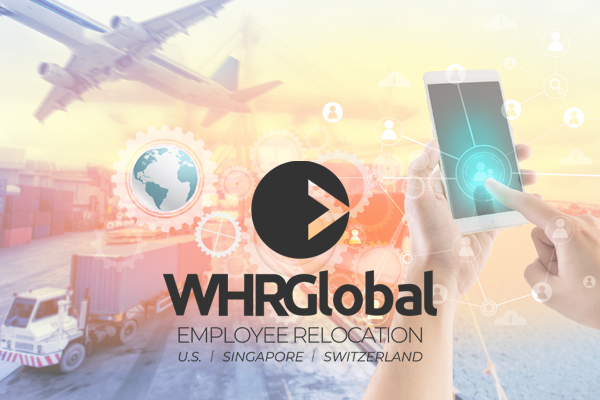U.S. Domestic Relocation Policy Essentials
A well-crafted domestic employee relocation policy will improve the transferee experience, control costs, meet your employees’ needs, and help you win and retain new talent. Improving the employee experience means reducing stress so that employees can focus on work roles in their new locations.
Offering a comprehensive suite of relocation services is crucial in crafting a relocation policy that effectively benefits both the company and the employee. A holistic approach not only supports employees in managing the complexities of relocating but also streamlines the process for the company, helping to maintain productivity and reduce the administrative burden.
Regularly reviewing and updating the policy to reflect current market trends and cost-of-living adjustments contributes to overall employee satisfaction and ensures competitiveness.
The 8 essential relocation benefits should be a part of your policy strategy:
1) Home Sale Programs
2) Rental Assistance
3) Destination Services
4) Household Goods
5) Lump Sum
6) Cost of Living Assistance (COLA)
7) Policy Exceptions
8) Policy Tiers vs Core Flex Benefits
8.5) Compliance

1) Home Sale Programs
Offering a competitive home sale benefit can provide significant advantages to both the company and the relocating employee. By offering a standardized home sale process, companies can ensure a consistent and controlled relocation experience, reducing the risk of dissatisfaction or failed relocations.

Guaranteed Buyout (GBO) or Buyer Value Option (BVO)
- Offering a GBO can be risky for your organization since it guarantees employees a home sale based on appraisal value,
but if the home is not sold then your company takes the home into inventory and must resell it. - A BVO, on the other hand, significantly minimizes the organizational risks seen with a GBO since your company purchases the employee’s home only after the employee secures an outside buyer.
- Some companies offer a GBO to their executives and a BVO to non-executives.
GBO
Some policies offer a Guaranteed Buyout Program (GBO), where the company or a third-party relocation service purchases the home if it does not sell within a certain period. This ensures the employee can move without financial strain.
Pros
- Tax advantage for your company and the employee.
- Employees are not required to attend closing.
- Professional appraisers ensure your company is offering a competitive market price.
- Guaranteed offer expedites the relocation process so that transferee can relocate faster.
Cons
- The company carries the risk of owning and maintaining the home until it is sold.
BVO
With the Buyer Value Option (BVO) program, the employee is responsible for marketing and selling their home on the open market, but once they secure a bona fide offer from a buyer, the company or a third-party relocation service steps in to purchase the home at the agreed-upon price. This approach allows the employee to sell their home at fair market value, while the company handles the closing and resale, streamlining the process and minimizing the employee’s involvement in the transaction after the offer is secured.
Pros
- Tax advantage for your company & transferee.
- Employees are not required to attend closing.
- Minimizes company costs as buyer is secured by employee.
- Broker Market Analysis completed by two real estate agents to establish an appropriate marketing parameter.
Cons
- If home sale falls through, homes go into corporate owned inventory.
- Employees remain financially responsible for their home until an outside offer is accepted which might delay their move to the new work location.
DR
A Direct Reimbursement (DR) home sale benefit offers a flexible, cost-effective alternative to BVO and GBO programs, providing employees with the opportunity to sell their home independently while receiving financial support for key expenses such as real estate agent commissions, closing costs, and legal fees.
Pros
- Lower financial risk since your company does not have to bring unsold homes into inventory and employees are responsible for selling their home and paying closing costs/commission fees up front.
Cons
- No tax benefit for your company or the employee.
- Your company will incur additional gross up cost (assuming you offer gross up).
- Employee is responsible for all costs up front (closing costs, commission fees, inspections, etc.).
Home Inspections
Most companies require a full home inspection for a GBO and BVO program. The home inspection is ordered by the Relocation Management Company (RMC).
An inspection helps reduce risks of the company purchasing a home with unknown significant defects.
The transferee is required to complete all necessary repairs before moving forward in a BVO or GBO program.
Some companies want to avoid being too picky about required repairs, so an alternative to a full home inspection would be a major component inspection.
- Well
- Septic
- Radon
- Termite
- Stucco
- HVAC
- Roof
- Interior plumbing and/or electrical
- Structural/foundation
Home Sale Bonus
A home sale bonus can be an incentive for employees to sell their homes quickly.
-
- Beneficial to your company if you offer a GBO; offered less in a BVO program.
- Decide where you will cap this benefit, and if the cap will vary dependent on employee’s role. Many companies base it on a percentage of the sale and/or offer a higher bonus for those that can sell their homes within a desired timeframe.
- This is not required in today’s real estate market as homes are selling quickly as demand greatly outweighs the supply of available inventory.
Loss on Sale
Some companies offer a loss on sale, whereby the company provides an additional benefit to employees selling their homes for less than the original purchase price.
This benefit is more prevalent with executives versus non-executives (usually at a capped amount).
2) Rental Assistance
Employees at different life stages have varied housing needs. Rental assistance benefits ensure that the company’s relocation policy is inclusive and supportive of diverse situations, such as younger employees or those relocating to urban areas where renting is more common.
Additionally, providing rental assistance helps minimize the stress of moving and eases the transition into the new work role. An essential component of this benefit is helping transferees with early lease termination.
If you choose to offer rental assistance, consider the following:
-
-
- How many days of rental search you want to provide.
- Placing caps on rental assistance ensures your company is containing costs. If an employee exceeds the cap, decide whether to provide an exception benefit on an individual basis.
- Encourage employees to negotiate with landlords to insert a diplomatic clause into the lease that reduces future lease break fees.
-

3) Destination Services
Relocating to a new location can be an overwhelming experience for employees. Destination services play a crucial role in easing this transition by providing support that helps employees settle in more quickly and comfortably. Essential destination services include temporary housing, home-finding assistance, settling in services, among others.
By offering comprehensive destination services, companies can significantly reduce the stress associated with relocation, allowing employees to focus on their new role and become productive sooner. A well-supported transition not only enhances the employee’s experience but also contributes to their overall satisfaction and success in their new position.
Essential destination services for a US Domestic relocation include: Home Finding including temporary housing or house hunting trips and destination closing costs.

Temporary Housing
Relocating to a new location can be an overwhelming experience for employees. Destination services play a crucial role in easing this transition by providing support that helps employees settle in more quickly and comfortably. Essential destination services include temporary housing, home-finding assistance, settling in services, among others.
By offering comprehensive destination services, companies can significantly reduce the stress associated with relocation, allowing employees to focus on their new role and become productive sooner.
A well-supported transition not only enhances the employee’s experience but also contributes to their overall satisfaction and success in their new position.
Home Finding/ House Hunting Trip
Providing a travel lump sum will simplify the process and allow employees to book/pay for house hunting trips.
See below for more details on lump sums
Destination Closing Costs
Many companies will offer this reimbursement to executives versus non-executives.
- Capping support is a way to control costs for this taxable benefit, especially if your company is providing gross up. This could be especially helpful when moving employees to high-cost housing destinations.
- Only allowing reimbursement of typical closing costs is recommended to ensure your company is not reimbursing items that are non-standard.
Some employers offer closing cost assistance to current renters buying a home in their new location.
- If you decide to provide this benefit, decide who will qualify. Only new-hire or existing employees, only executives or based on job level?
- Although it is not the most commonly offered benefit, an incentive to rent can provide your company with potential cost savings on future relocations.
- Good option for employees who relocate often, thereby your company can forego paying closing and future home sale costs on a repetitive basis for the same employee.
4) Household Goods
The HHG move is one of the most stressful stages of a relocation. Covering the cost and logistics of household goods shipping significantly reduces this stress, helping employees focus on transitioning to their new role.
-
- Make sure your RMC is proactive in their communications and provides opportunities for employees to give live feedback so that any issues can be addressed immediately.
- Verify that the RMC provides transparent pricing, detailed tracking of expenses, and comprehensive insurance coverage to mitigate risks.
- Most companies will provide tax assistance with HHG moves, especially since the Tax Cuts and Jobs Act (TCJA) of 2018 was passed.

Vehicle Shipment
Create cost savings by basing the number of vehicles authorized on move distance. It is common for companies to offer at least one vehicle to be shipped if the distance will be over 500 miles, and up to two if the distance is over 1000 miles. This reduces the stress of requiring the employee and family to travel long distances in separate vehicles.
Temporary Storage
Most companies will provide temporary storage of the employee’s household goods until permanent housing is secured.
- A well-defined policy that includes temporary storage provides clear guidelines for both the employee and the company, reducing ambiguity and potential disputes over what is covered during the relocation process.
- To save costs, do not provide this benefit for personal reasons, e.g., during home remodeling, when the employee may want to store items until the work is complete, or if the employee is going on vacation and cannot be present for HHG delivery.
5) Lump Sum

Decide if you want to offer a partial or full lump sum policy to transferees. Some employees may enjoy the freedom of being able to use their relocation money as they see fit.
Pros for providing lump sums include the following:
-
- Cost containment
- Easy budgeting and administration
- Market competitiveness
- Great for employees with less to move
- Internship programs
There are three main types of lump sums discussed below:
lump sum only (no counseling); managed lump sum (with counseling); and lump sum (in addition to other benefits).
Lump Sum Only Benefit
(no counseling)
The transferee receives one lump sum payment. The employee decides how they plan to spend these funds.
- Commonly used with non-executives including entry-level hires and employees in development programs who rotate locations frequently.
- Typically, not utilized with higher-level relocations.
- Majority of lump sums are less than $5K
Managed Lump Sum
(with counseling)
Allows your company to retain partial control over how the employee uses the money while still allowing some flexibility. The RMC counsels the employee on approved ways they can use their managed lump sum, and the funds are provided as a reimbursement after the employee incurs the cost or is direct billed to one of your RMC’s supplier partners.
- Managed lump sums are used more often as the only benefit to executives or higher-level employees versus a lump sum only (no counseling), used more often with entry-level employees.
Lump Sum
(in addition other benefits)
This is the most frequently used type of lump sum benefit. It works well because companies can provide other benefits – tailored to the individual’s specific relocation needs – while still providing a lump sum that the employee can spend as they wish.
This type of benefit will also allow your company to control costs, and it adds some additional flexibility for the employee.
Cost of Living Adjustment (COLA)
Some of your employees may be moving to an area with a lower cost of living and some may be moving to a much higher cost destination. If higher costs exist, some companies will provide a limited term cost of living allowance to bridge the financial gap. Options for payout could include monthly, quarterly, annually or a one-time lump sum.
- Set an ending time-period for this benefit and decide whether the benefit will slowly decrease/taper during that time-period.
- Companies should also consider the tax implications of COLA payments and ensure clear communication with employees about how the adjustment is determined.
It is best to only offer this benefit to those employees moving to higher cost destinations. If your employee is moving from one high cost of living area to another, consider withholding this benefit. Often employers will establish a threshold (typically a percentage), to offer the benefit. Others will identify specific areas/cities and only offer the benefit to employees moving to these pre-determined locations.

7) Policy Exceptions
Decide how you want to handle policy exceptions and make sure you and your RMC are in sync. Develop a well-defined process for requesting and evaluating exceptions, including who is authorized to approve them and under what circumstances exceptions will be considered. Even though you may have a great employee relocation policy, it is not always one-size-fits-all! Individual cultures, specific needs and family dynamics may create the need for exceptions. Make sure your RMC is tracking all requests/outcomes. Regularly review the types and frequency of exceptions requested to identify patterns or gaps in the current policy, which may indicate the need for policy adjustments.
Some common policy exception requests might include the following:
- Extended temporary housing or household goods storage
- Additional crating of items, vehicles to be shipped or other services for a household goods move
- Home listing parameters / Qualifying home requirements
- Additional reimbursements for travel
- Repair Requirements
- Benefit extensions
8) Policy Tiers vs Core Benefits
Policy Tiers
With policy tiers, the company selects which employees receive specific benefit packages. Often, policy tiers categorize employees into different levels (tiers) based on factors like job level, seniority, or relocation distance, with each tier offering a predefined set of benefits.
For example, relocation benefits provided to an executive might be different than benefits provided to an entry-level employee. While a tiered policy allows a company to be selective regarding which benefits are offered to each level of employee, some benefits may be offered in all packages.
In other words, a HHG move could be offered to all relocating employees, but the cost of the move could have caps for lower-level employees. Some companies will only offer home sale assistance to higher level employees, but all other benefits may be the same regardless of role/job level of the employee.
In addition to employee position level, other factors that could affect which tier an employee fits into might include whether they are a homeowner versus renter, or a new hire versus an existing employee.
Core Benefits
Core Flex benefits offer a more tailored solution by providing a core set of essential relocation benefits to all employees while allowing additional flexible benefits that employees can choose based on their specific circumstances.
While Core Flex offers greater customization and can enhance employee satisfaction, it requires more complex administration and careful communication to ensure employees understand their options.
8.5) Compliance
Compliance is an essential consideration when developing a U.S. domestic relocation policy, as it ensures that the company adheres to all relevant laws and regulations. This includes understanding tax implications, employment laws, and real estate practices that vary by state. Creating a policy that prioritizes compliance helps mitigate risks, avoid potential legal issues, and ensures that both the company and the transferee are protected.
In Conclusion
In crafting an effective US domestic relocation policy, it is crucial to consider a variety of best practices that address both employee needs and organizational goals. Regularly compare your policy with industry standards and competitors to ensure it remains competitive and effective.
Consider partnering with a good RMC who can help write your policy, benchmark it regularly, and administer it cost-effectively.
For more best practices, get our 2024 Global Mobility Benchmark Report.







